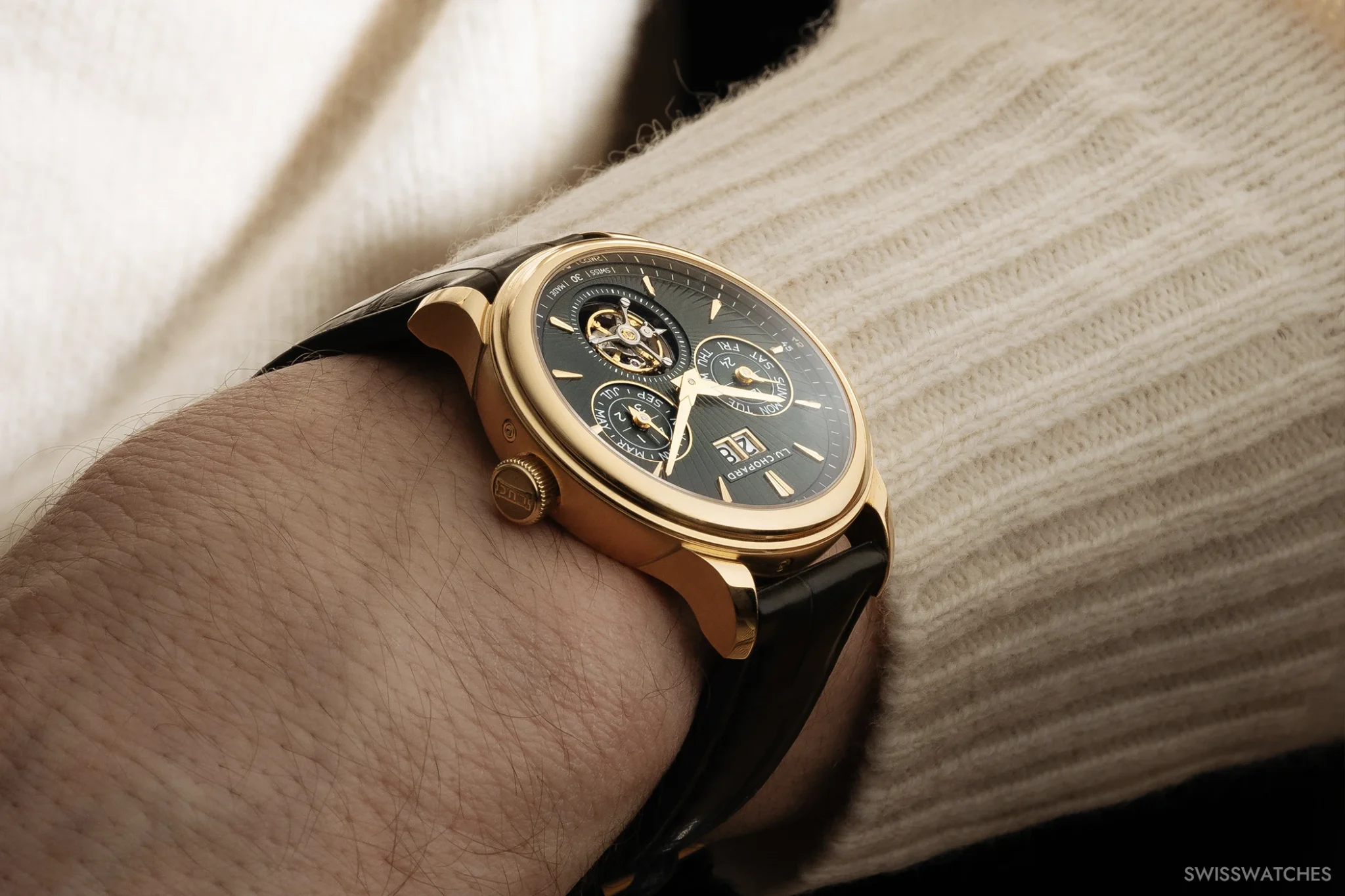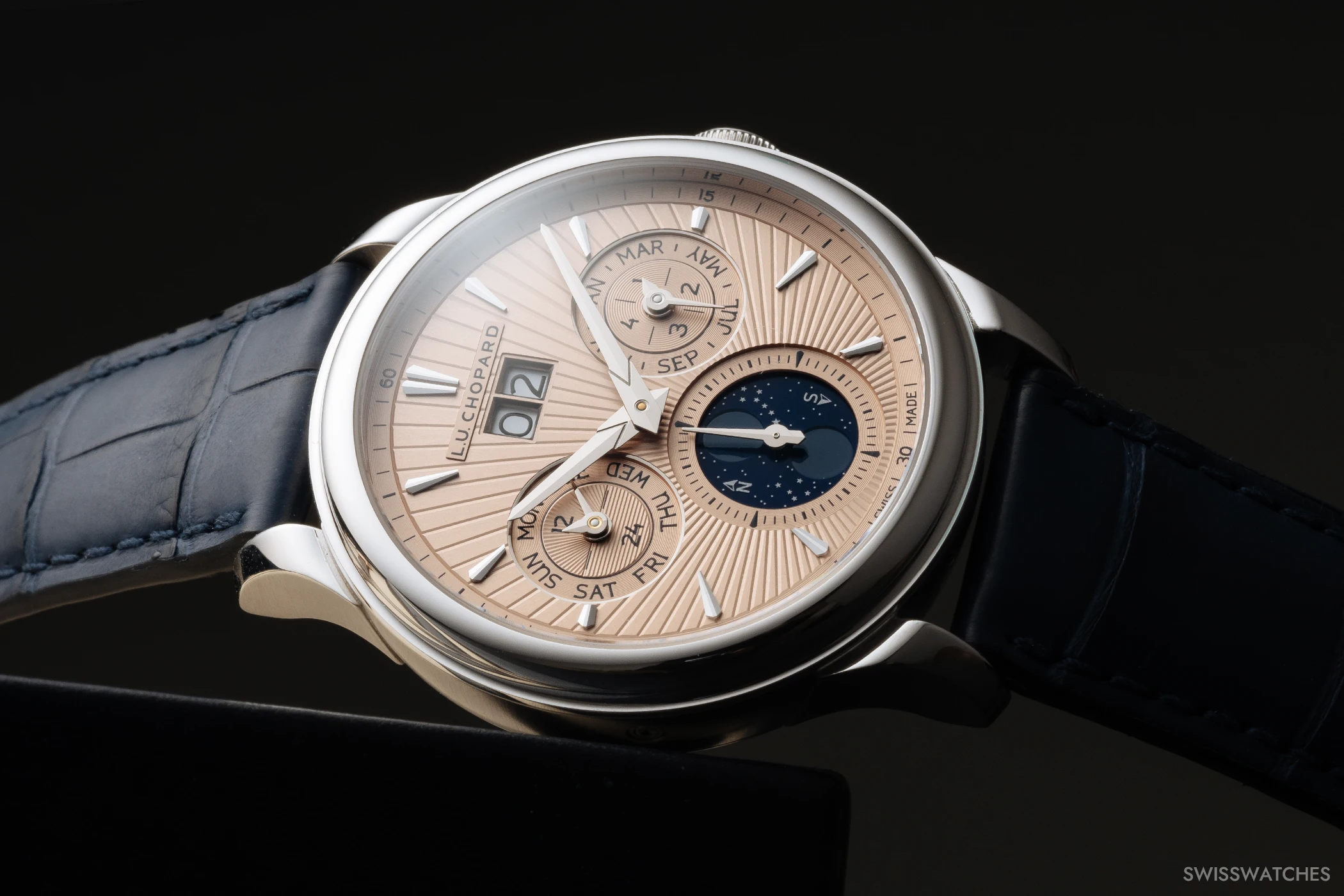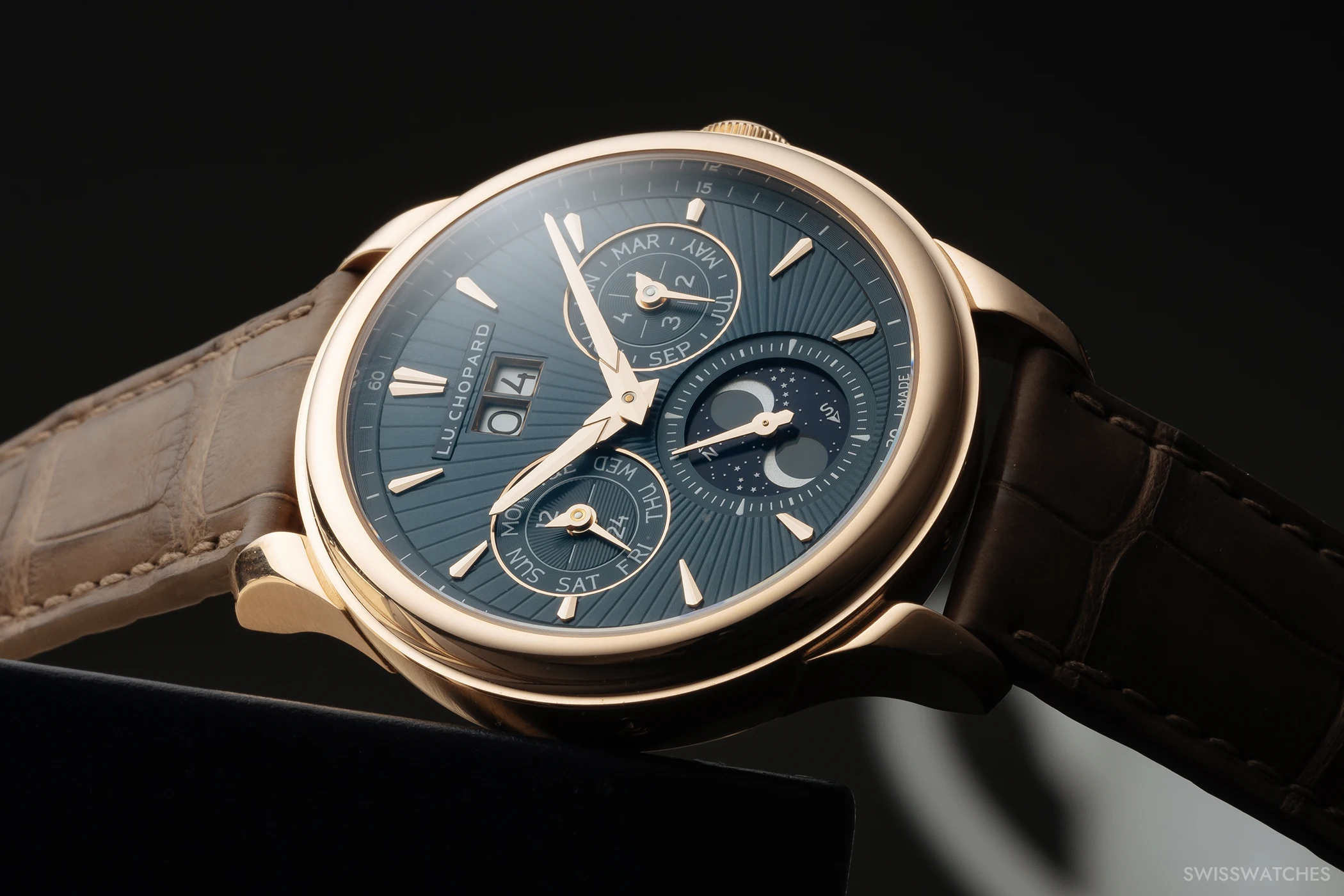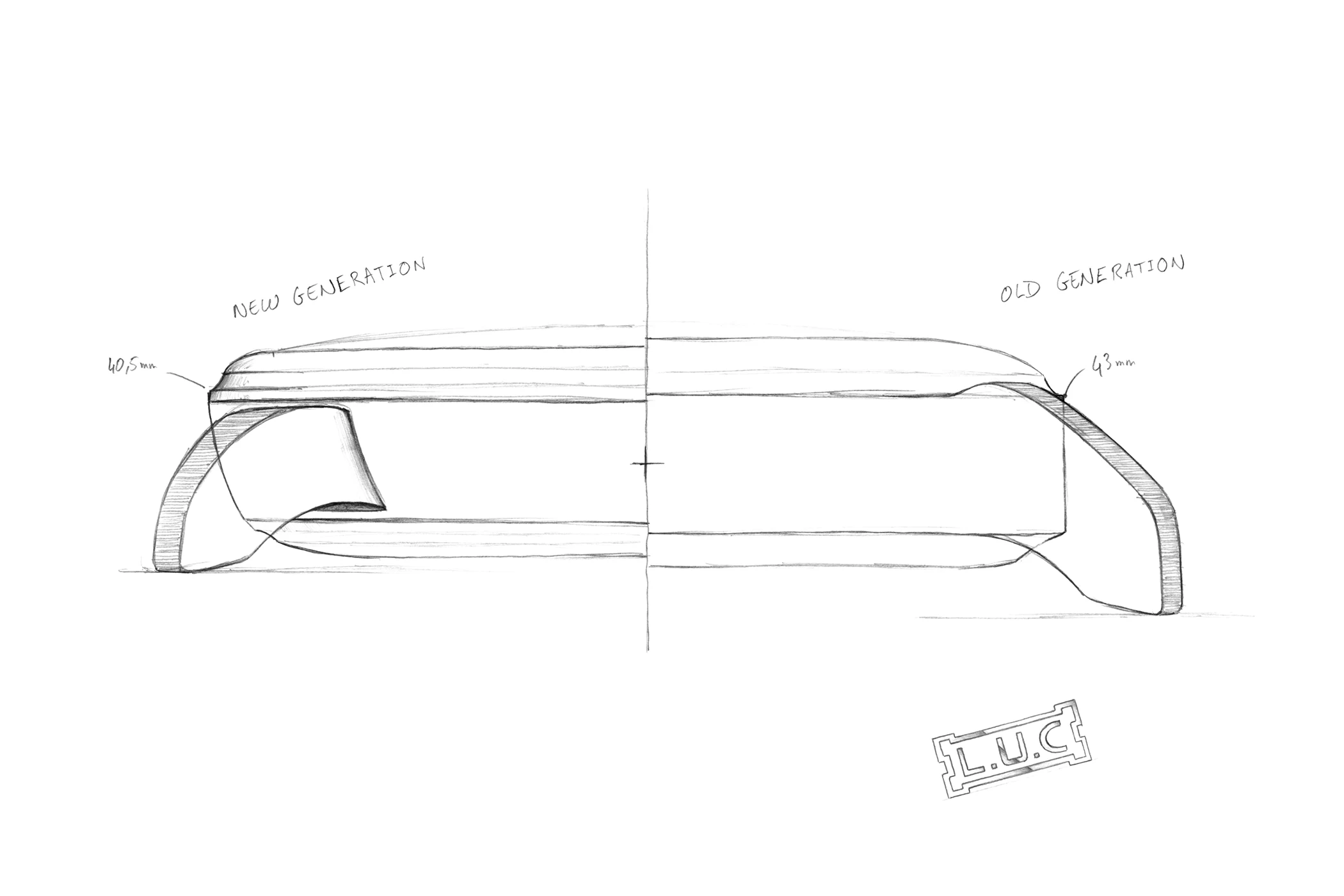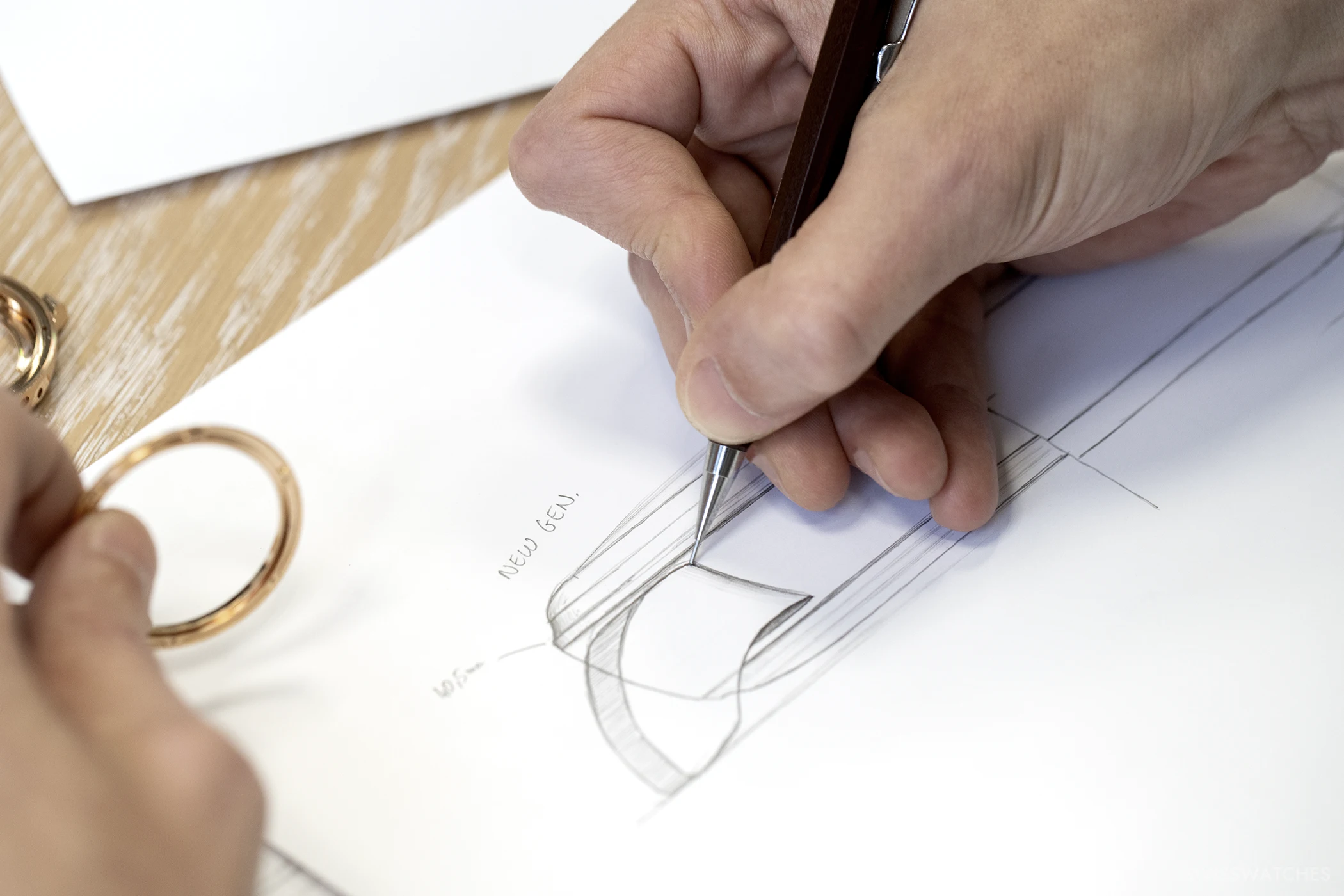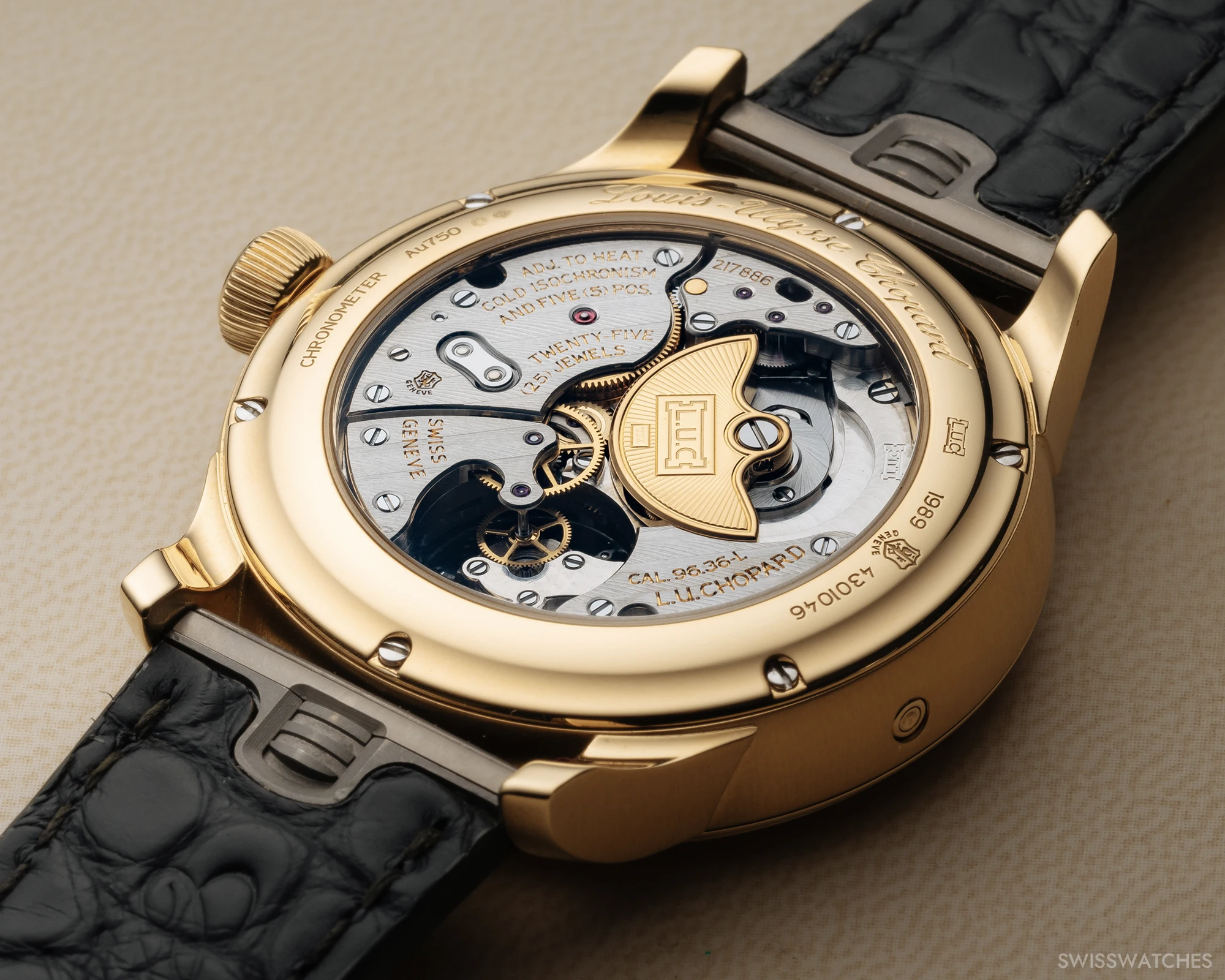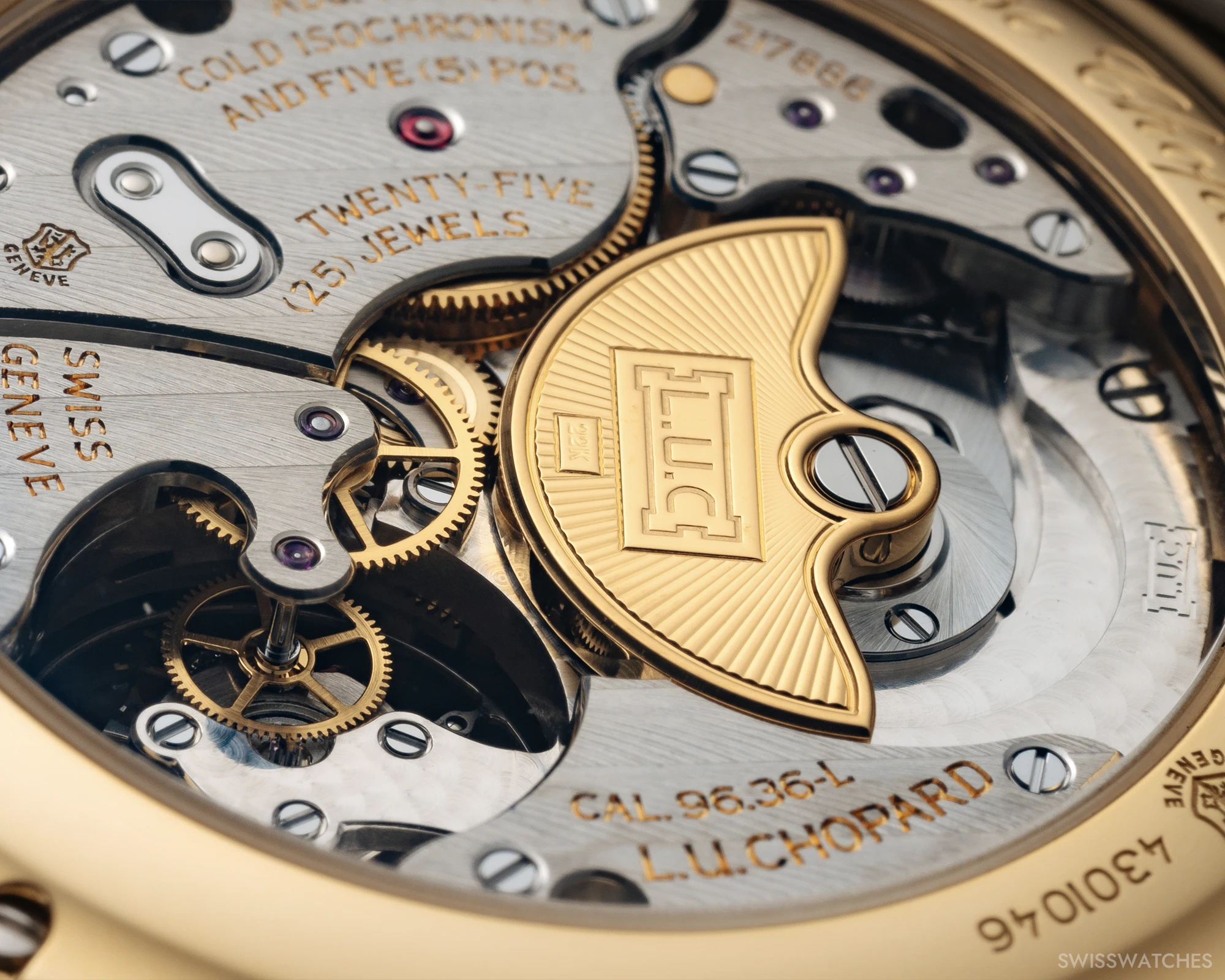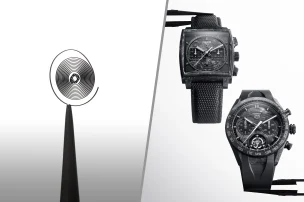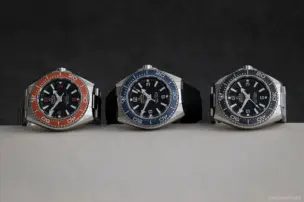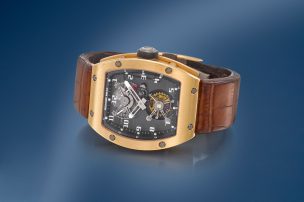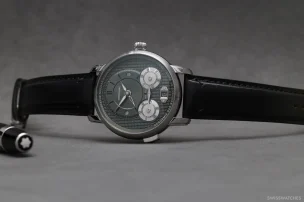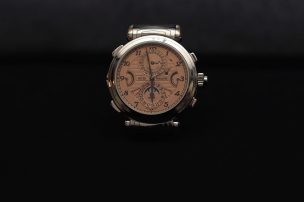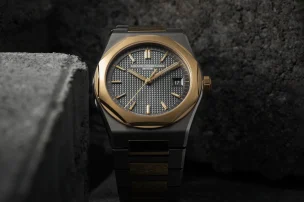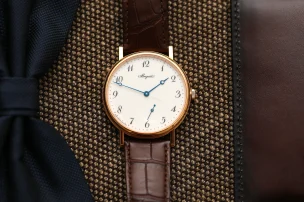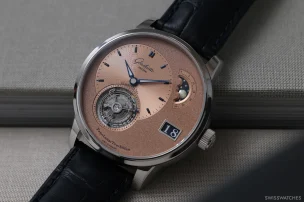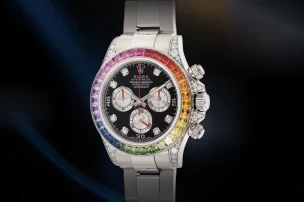
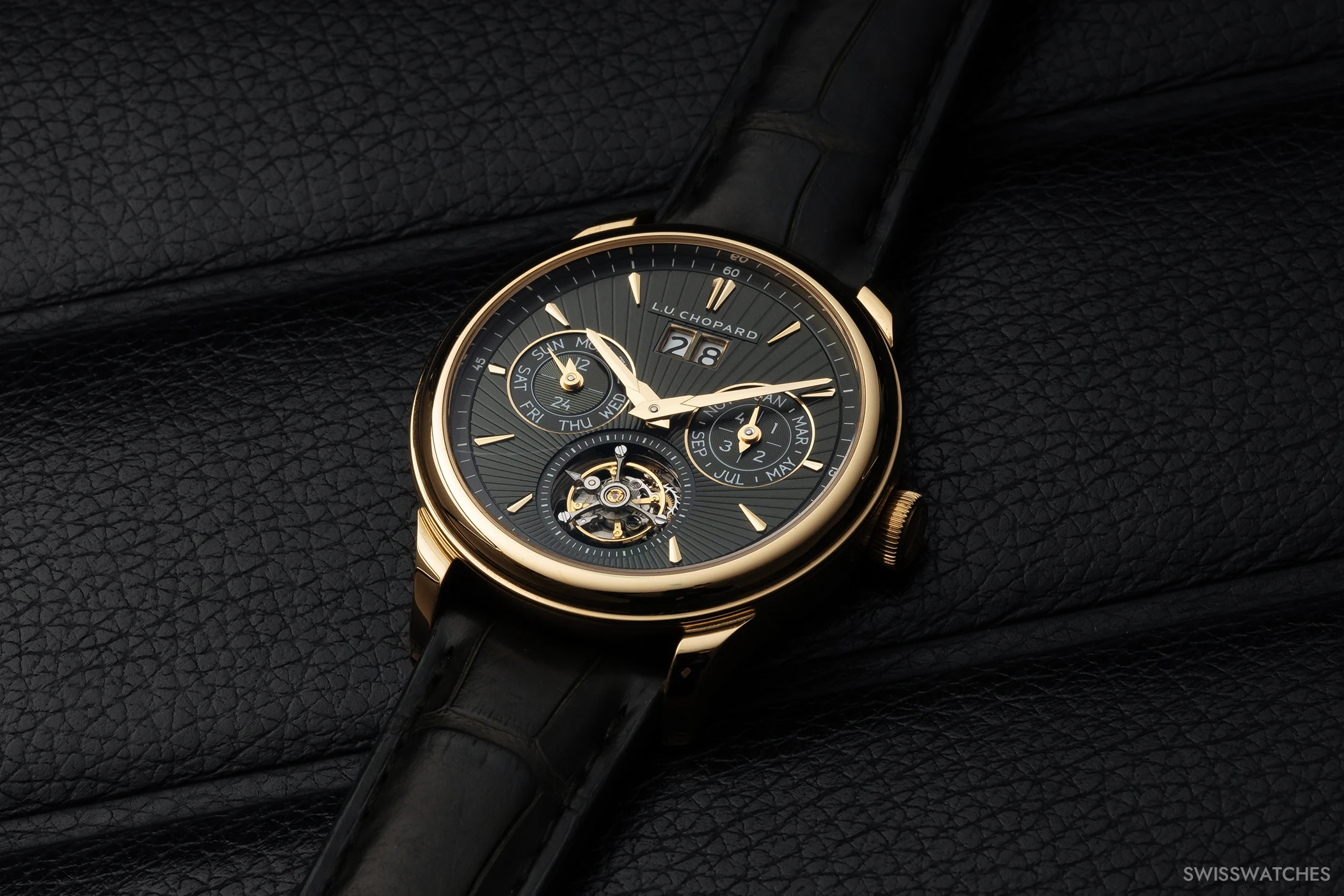
The future of Chopard: L.U.C Lunar One And L.U.C Flying T Twin Perpetual
As always, Chopard’s latest creations are well worth looking at in detail, as they offer a glimpse into what the brand is calling the aesthetic future of the company. Seamlessly blending refined elegance with the precision of guilloché craftsmanship, the latest timepieces set a new standard for timeless sophistication. The L.U.C Lunar One and the L.U.C Flying T Twin Perpetual are also two of the brand’s most exclusive timepieces. Together, the pair embody the essence of Chopard’s style in 2025 while hinting at the innovations yet to come.

The L.U.C Lunar One – a statement watch
Chopard is known as a maison with a great horological history, which is also known revered for its high jewellery creations. A comparison with Cartier would be apt, except that in France, jewellery came to watches the other way round. Either way, one thing is clear: the opulence and the high-calibre eye-catching factor of Chopard’s necklaces stand in clear contrast to the models in the L.U.C collection, which are primarily characterised by understated elegance. The timepieces thus correspond to the basic understanding of traditional watchmaking, which focuses on the calibre. After all, the L.U.C series represents the upper end of Chopard’s horological creativity, and where the Happy Diamonds models celebrate hedonism and the desire to sparkle, L.U.C (which are the initials of the company’s founder Louis-Ulysse Chopard) stands for a showcase of the manufacture’s achievements.
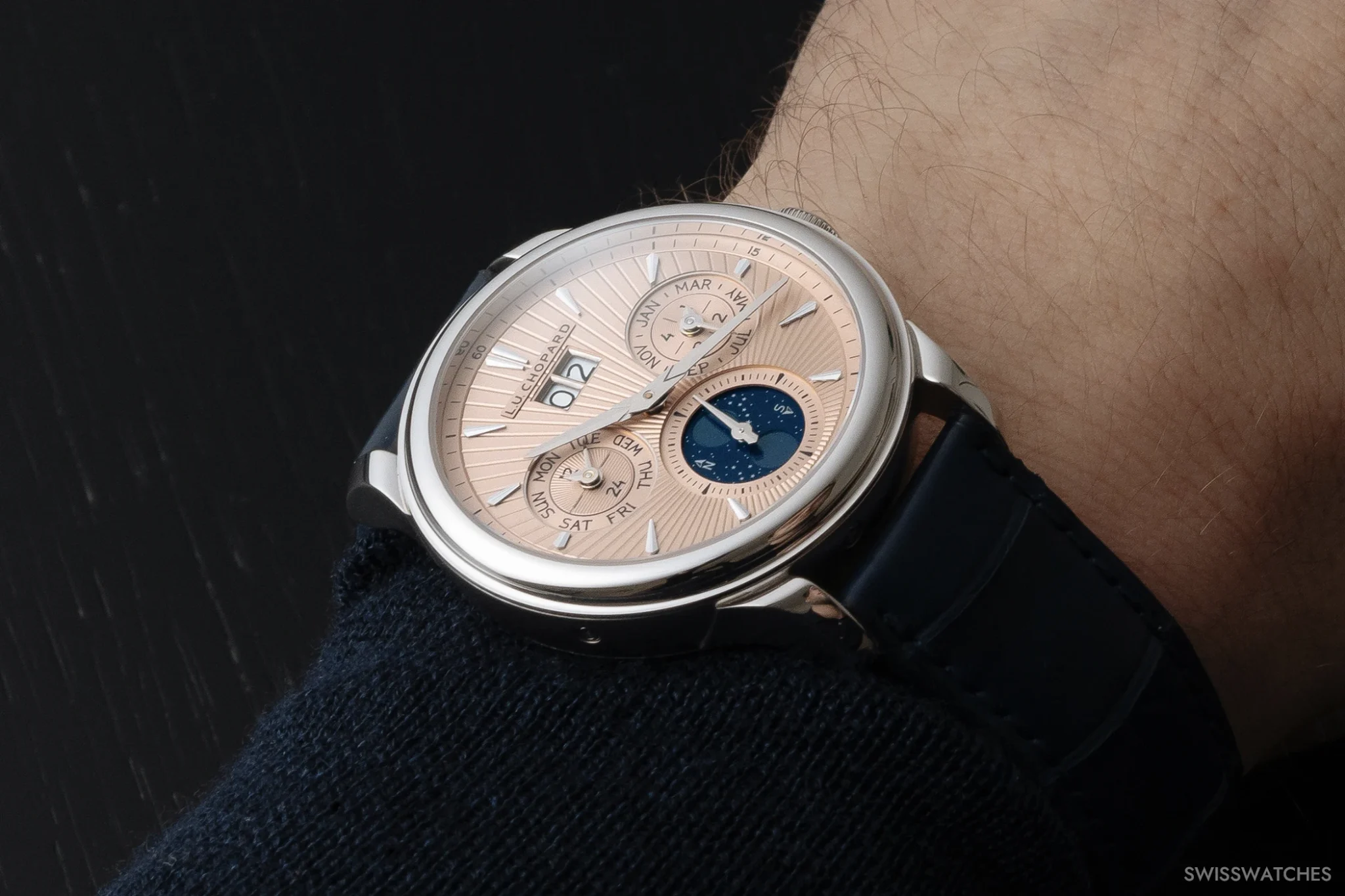
The L.U.C Lunar One was also a statement when it was launched in 2005: the first watch with a perpetual calendar and an astronomical display in the form of an orbital moonphase display that rotates around the seconds axis. Two generations later, we are now looking at (at least for the time being) two new variants whose significant innovations are obvious on the one hand, but which only reveal truly themselves at second or third glance.
The new generation: an aesthetic that breaks with the tried and tested
One of the recognisable features of the L.U.C Lunar One is, logically enough, the special moonphase, which depicts both the sky of the northern hemisphere with the Big Dipper and the southern hemisphere with the Southern Cross. Opposite it is the equally typical large date, and at three and nine o’clock, the subdial counters with month and leap year display, as well as day of the week and 24-hour display.
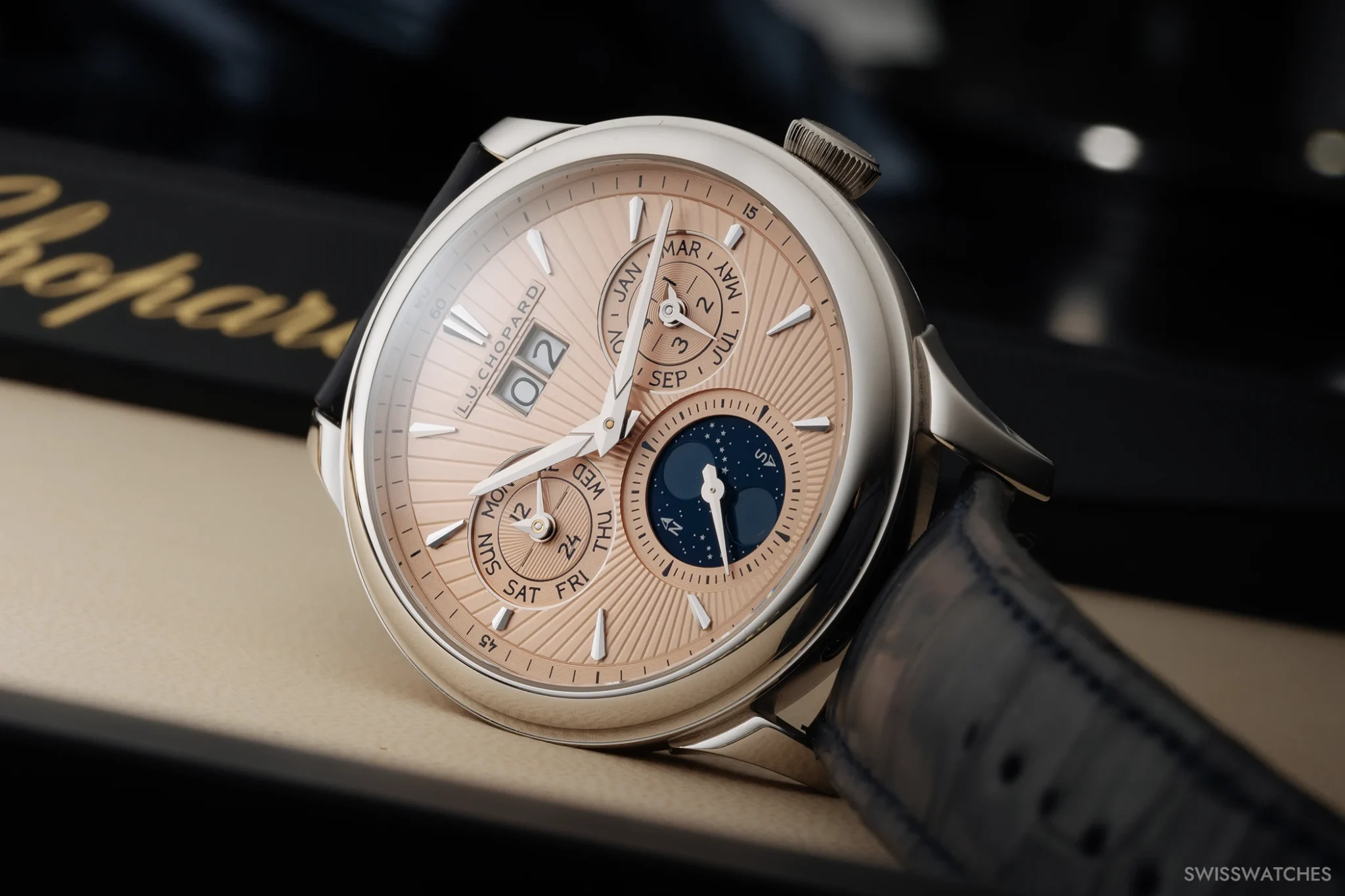
The biggest change over the generations in this classic watch face has been the dial, which has traditionally also received great attention to craftsmanship within the L.U.C collection. Casting one’s eye back to 2005 reveals an original L.U.C Lunar Onee, characterised by diamond-shaped indices and the Roman numerals four and eight. Interestingly, the four is shown here with ‘IIII’ instead of ‘IV’, as was customary in ancient Rome, because the letters IV were reserved for the god Jupiter as his initials. The second generation followed in 2012, in which the Roman numerals were given significantly more space. And today? In its most recent form, the L.U.C Lunar One is still recognisable as a Chopard at first glance, but now completely dispenses with the use of Roman numerals. These have been replaced by tapered hour markers in gold. The design gives the new models a more modern, clearer look, but above all, it frees up space for the highlight of the third generation of the L.U.C Lunar One: the guilloché dials made of gold.
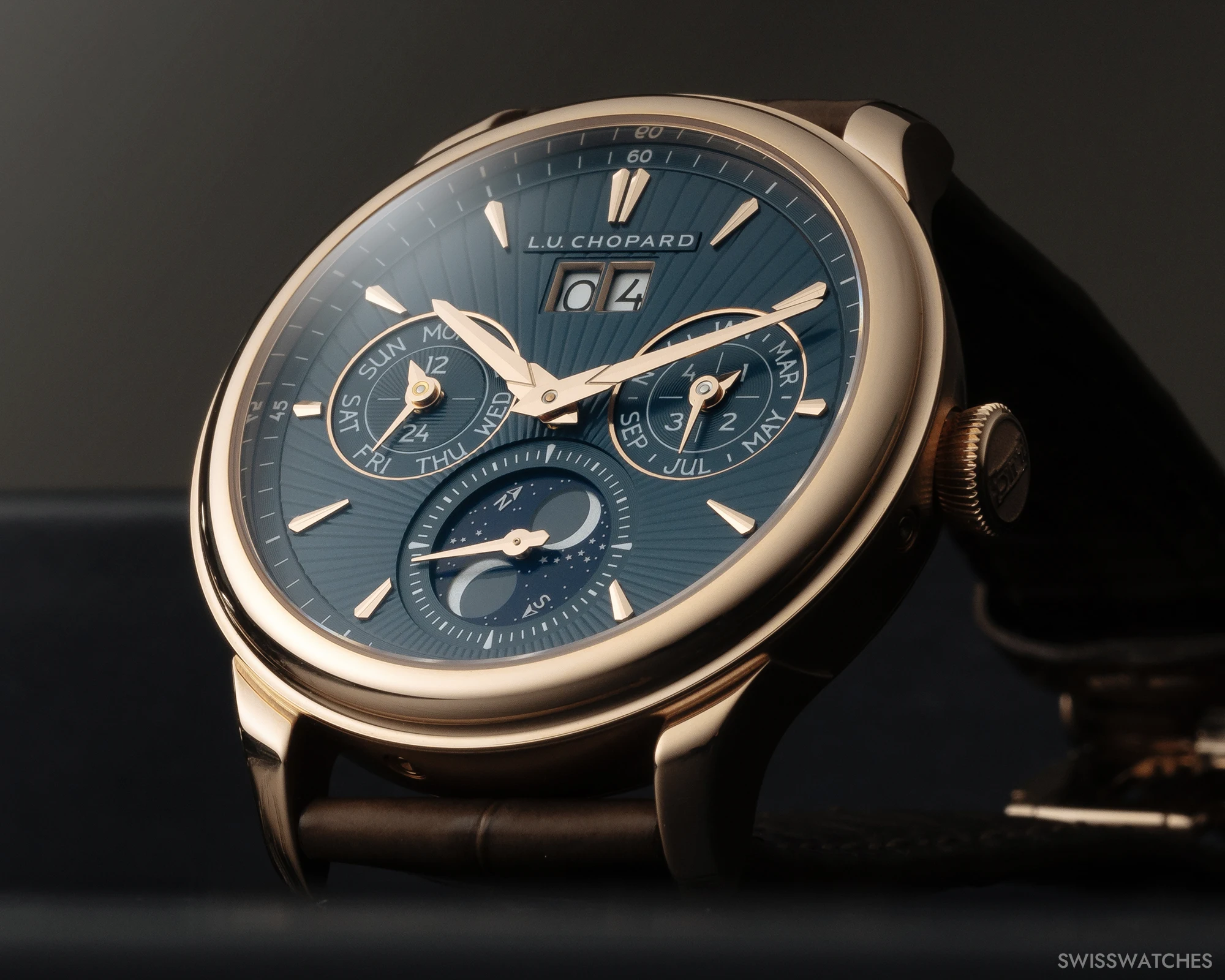
These are produced by Metalem, a subsidiary of Chopard, whose experts also supply some of the other big names in the industry with some of their iconic dials. The dials are produced using historical guilloche machines under manual control.
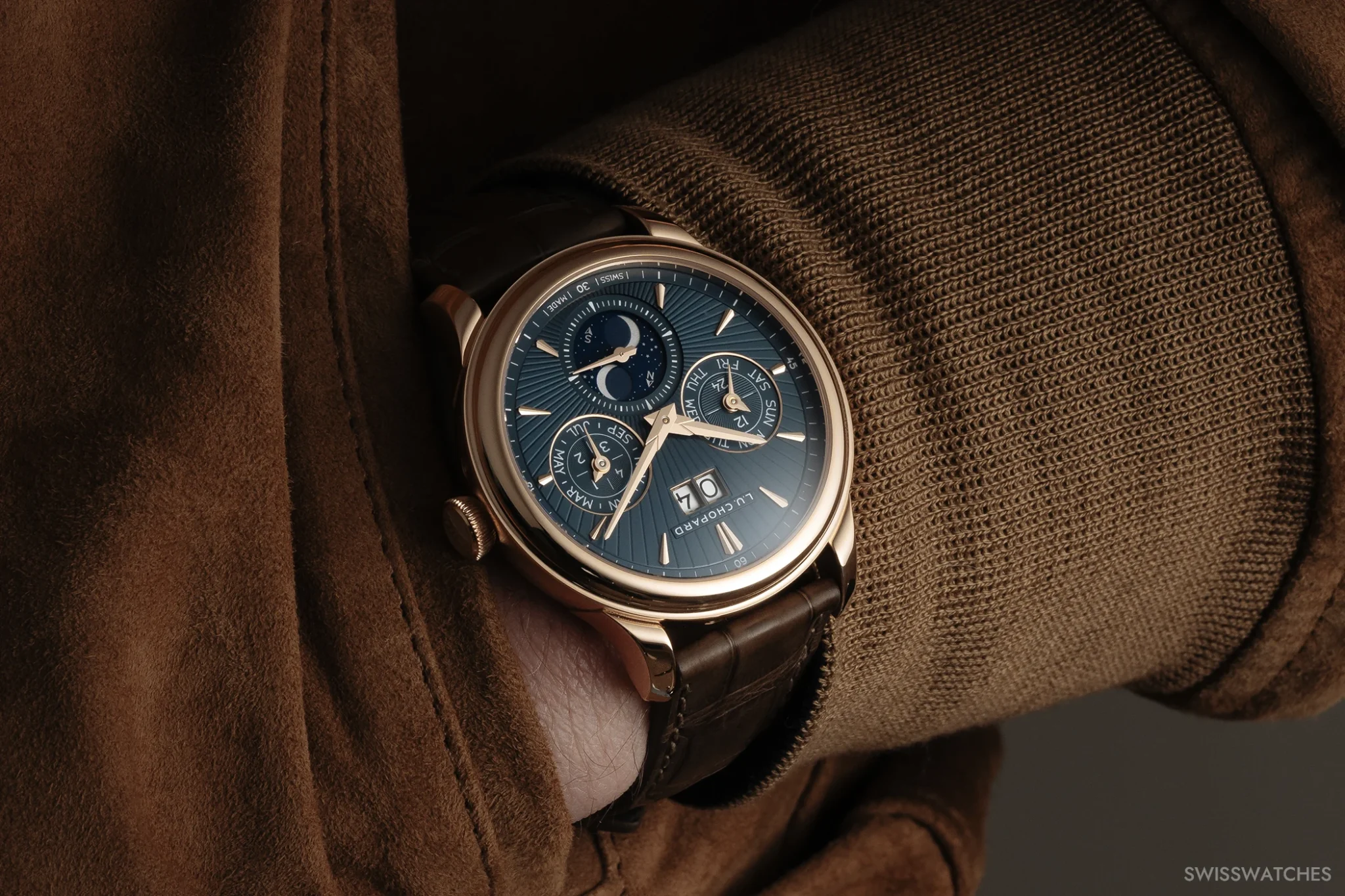
For the launch of the new L.U.C Lunar One, it is available in two versions: white gold with a salmon-coloured dial, and in rose gold with a blue dial. Both share the radial hand-guilloché pattern emanating from the moonphase. Chopard connoisseurs will already be familiar with the look from the past, but then largely concealed by numerals, or in a limited special edition such as the ‘Perpetual T’ with a salmon-coloured dial. With these models, however, rays of light emanate from the date.
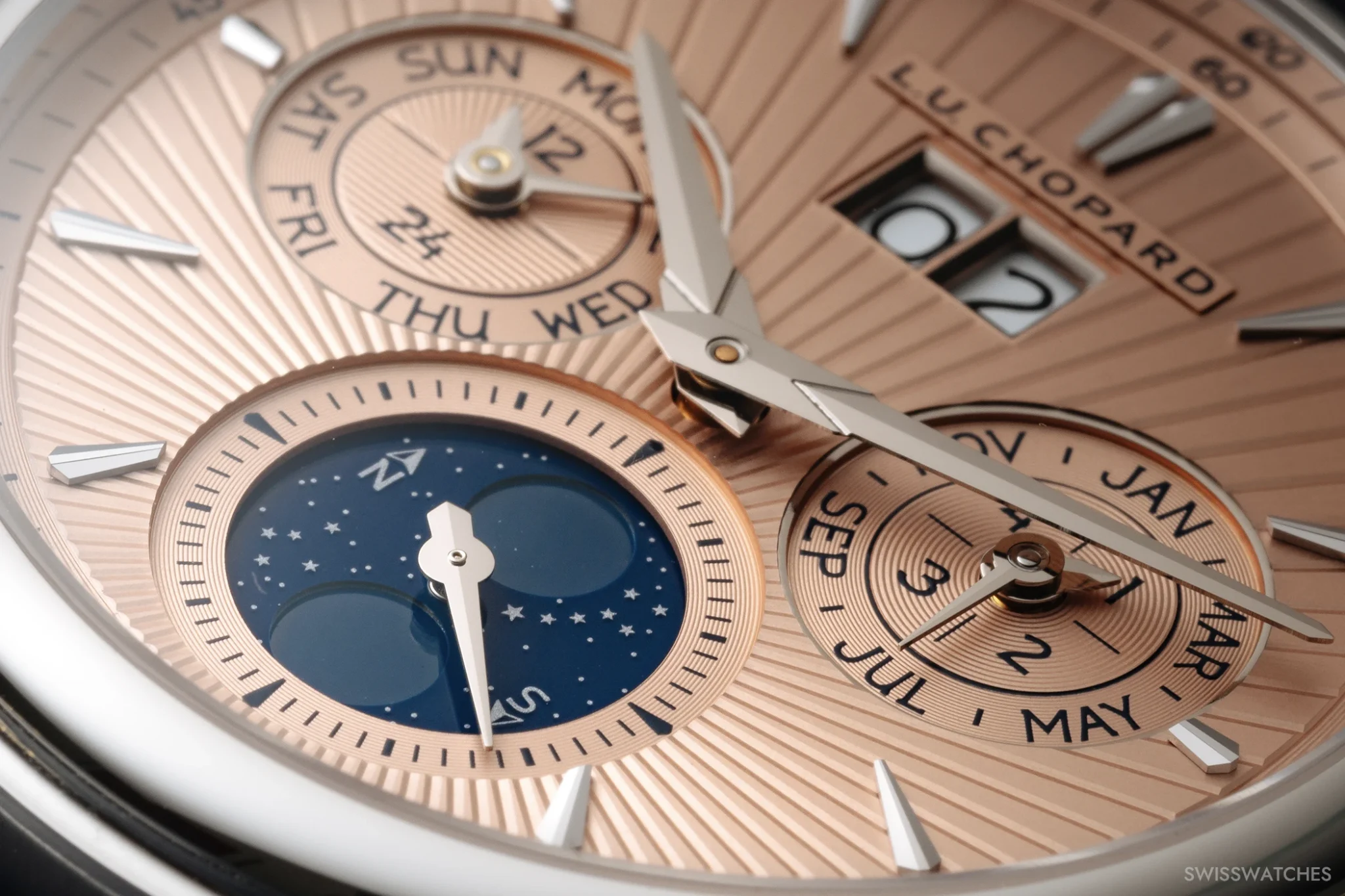
In the latest version, the guilloche pattern now radiates even more powerfully and has a much more harmonious overall effect. It is reminiscent of a view of a sunrise or a halo in a winter landscape. The subdial counters are also decorated: the dial at three o’clock with a circular pattern, and at nine o’clock with a sunburst pattern for the day display, as well as a horizontal pattern for the night display. The result is an overall look of great appeal, which can vary from extremely elegant to quite casual thanks to different bracelets. A new interchangeable system makes this uncomplicated transformation possible, and the 92,200-euro models are supplied with two different coloured straps: one in alligator leather and one in calfskin.
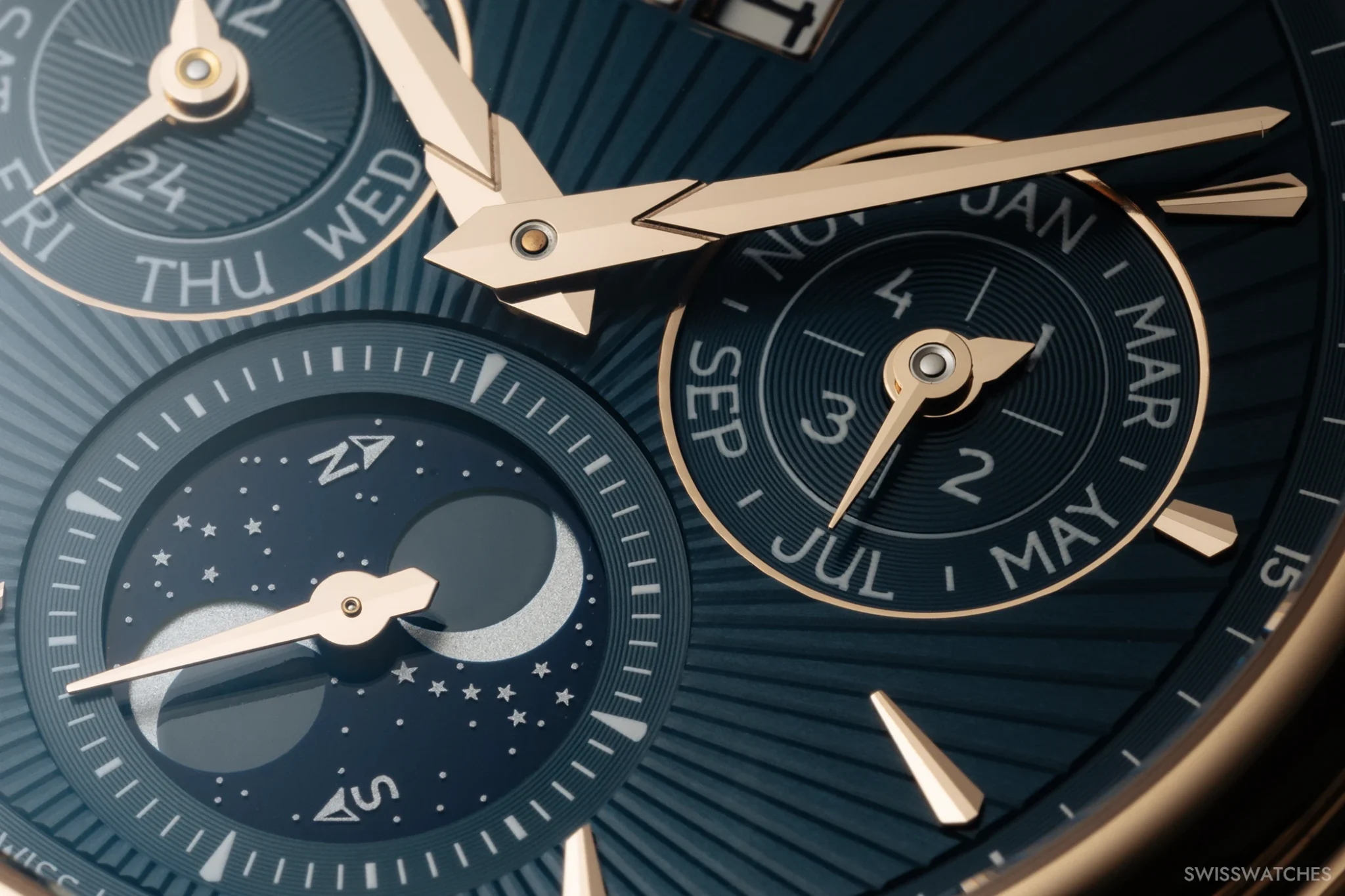
At the presentation of the two new models, the management also explained the move away from Roman numerals in favour of simpler indices by stating that the current look had already proved popular with the L.U.C Perpetual Chrono and Perpetual Twin. And yes, one can assume that this development will also be noticeable in other models. At first, this may seem like a small step, but many of the company’s references have so far featured Roman numerals on their dials, from ‘L.U.C’ to ‘Alpine Eagle’. If this now changes, then the overall appearance of the brand will also change in the medium term.
The L.U.C Lunar One and the movement – is everything the same?
The allure of the new dials should not distract from the fact that the entire model has been redesigned. At 40.5 mm, the case has a smaller diameter, while the height of around 11.6 millimetres is virtually unchanged. Nevertheless, it appears slimmer and softer than its predecessor. Its shape is concave, which makes it much more comfortable to wear. Incidentally, the designers modelled their new design on the Chopard pocket watches of the 19th century.
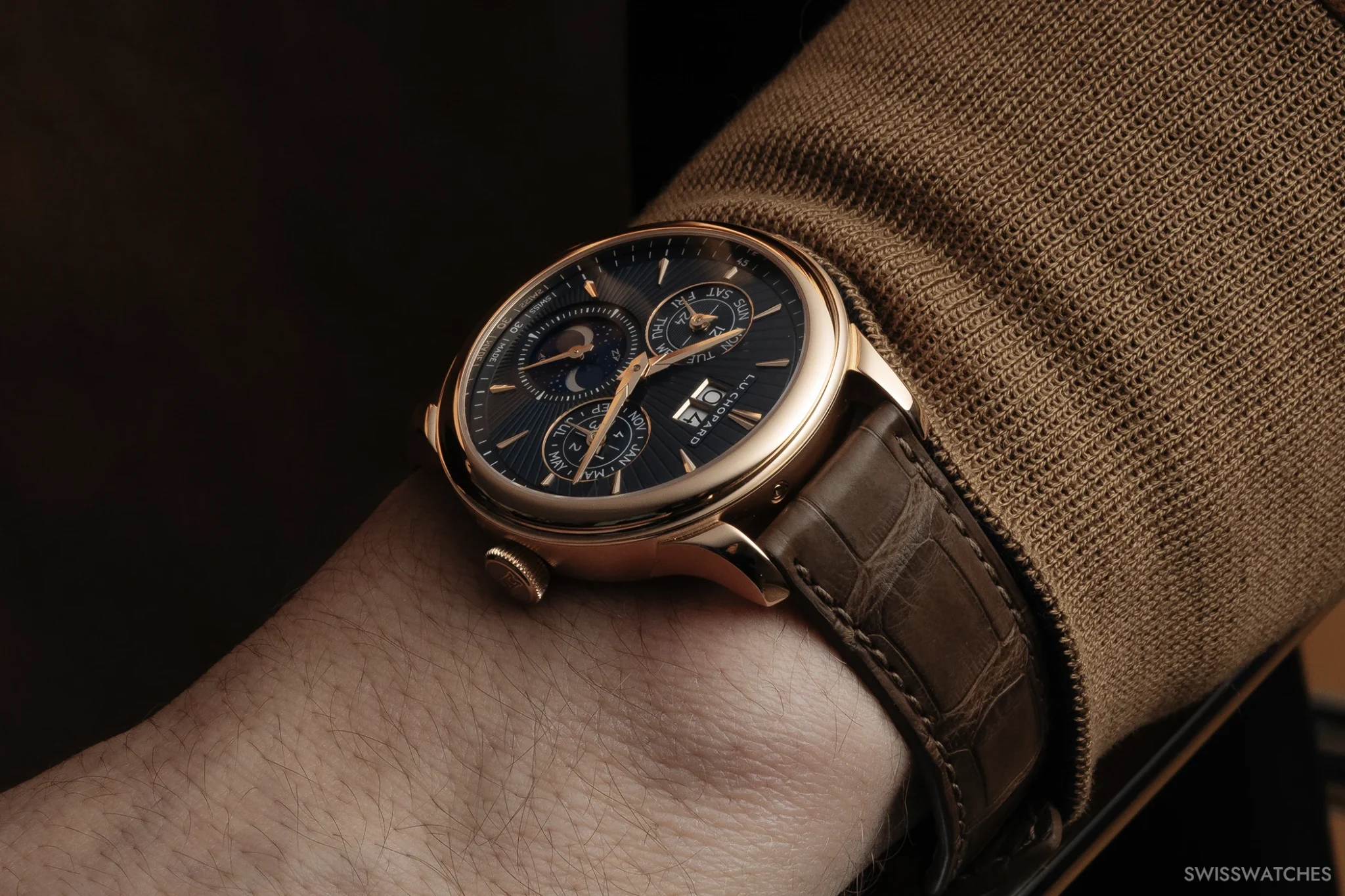
The micro-rotor automatic movement of the perpetual calendar with its orbital moonphase display is still called Calibre L.U.C 96.13-L. It has a power reserve of 65 hours. According to Chopard, all 355 components are manufactured in the company’s workshops. The company is particularly proud of the accuracy of the moonphase, which is 57.2 seconds from full moon to full moon, corresponding to a calculated deviation of just one day in 122 years.
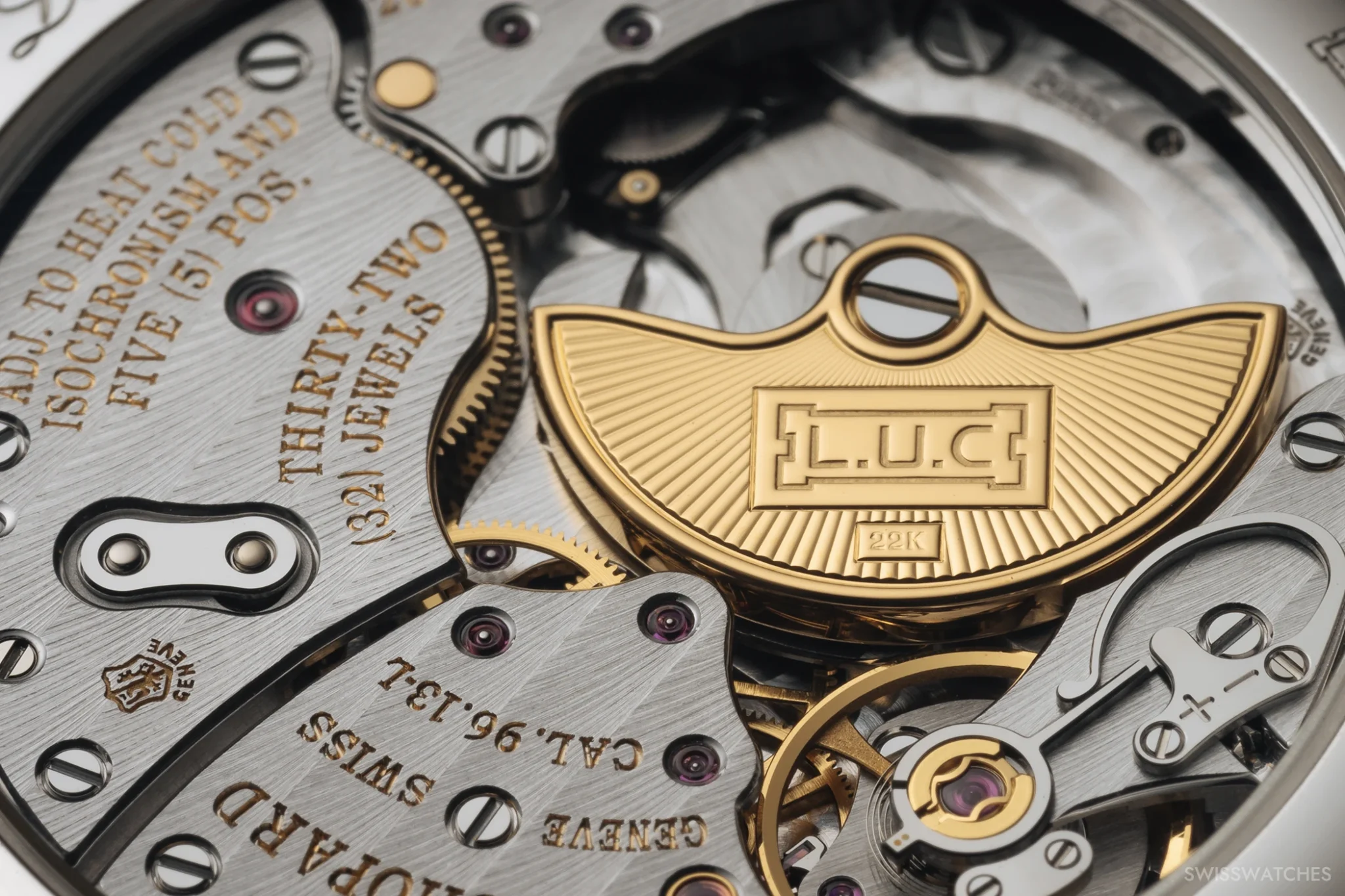
After all, the calibre is at the heart of every endeavour of Karl-Friedrich Scheufele, the president and co-owner of Chopard. The maison’s rule is that the movement comes first, and then the case. When talking to the Chopard employees, they state clearly that the name of the calibre remains unchanged, but it is constantly being optimised. The new L.U.C Lunar One is therefore definitely a further development of the status quo from 2005 and 2012. The quality is also confirmed by the Geneva Seal, the ‘Poinçon de Genève’, as well as a COSC chronometer certificate. Only the ‘Qualité Fleurier’ seal is currently no longer mentioned, but this may be mainly due to the fact that Chopard is currently the sole financier of the foundation behind it and would ultimately be labelling itself.
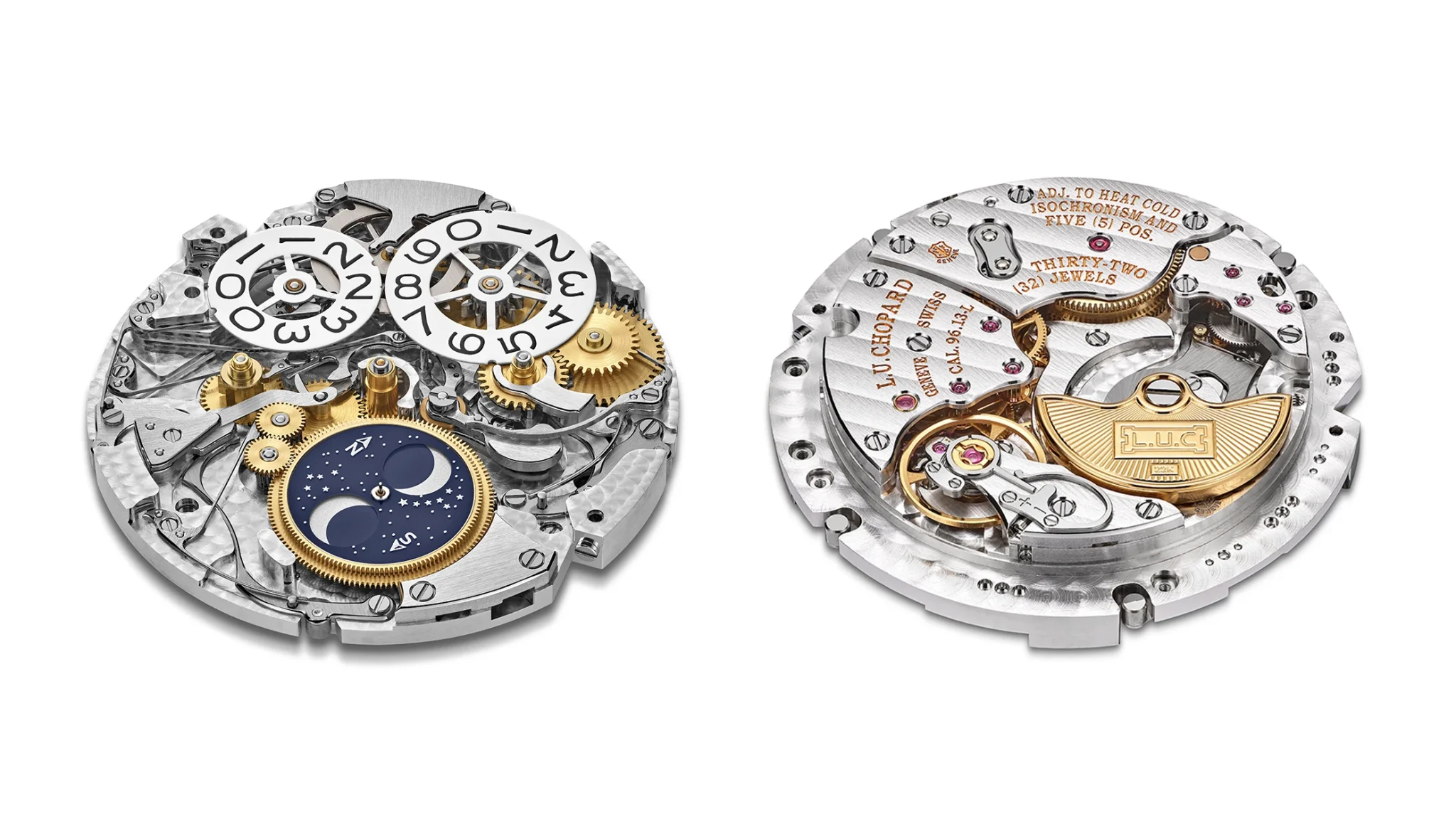
Patek Philippe, A. Lange & Söhne, Vacheron Constantin – what are its competitors up to?
The Scheufele family is proud of the L.U.C Lunar One for good reason. Combining an automatic perpetual calendar with a moonphase of this sophistication, and COSC-certified to boot, puts Chopard in a pretty unique position. But there is always competition. Or is there?
At Patek Philippe, for example, there is reference 5236, the perpetual calendar in two platinum versions (also available with a dark blue or salmon-coloured dial). This shows the date on a display line and also has a moonphase complication. The price: 139,050 euros. This timepiece has an even more minimalist, uncluttered look, while at the same time completely dispensing with guilloché and the depiction of the northern and southern hemispheres.
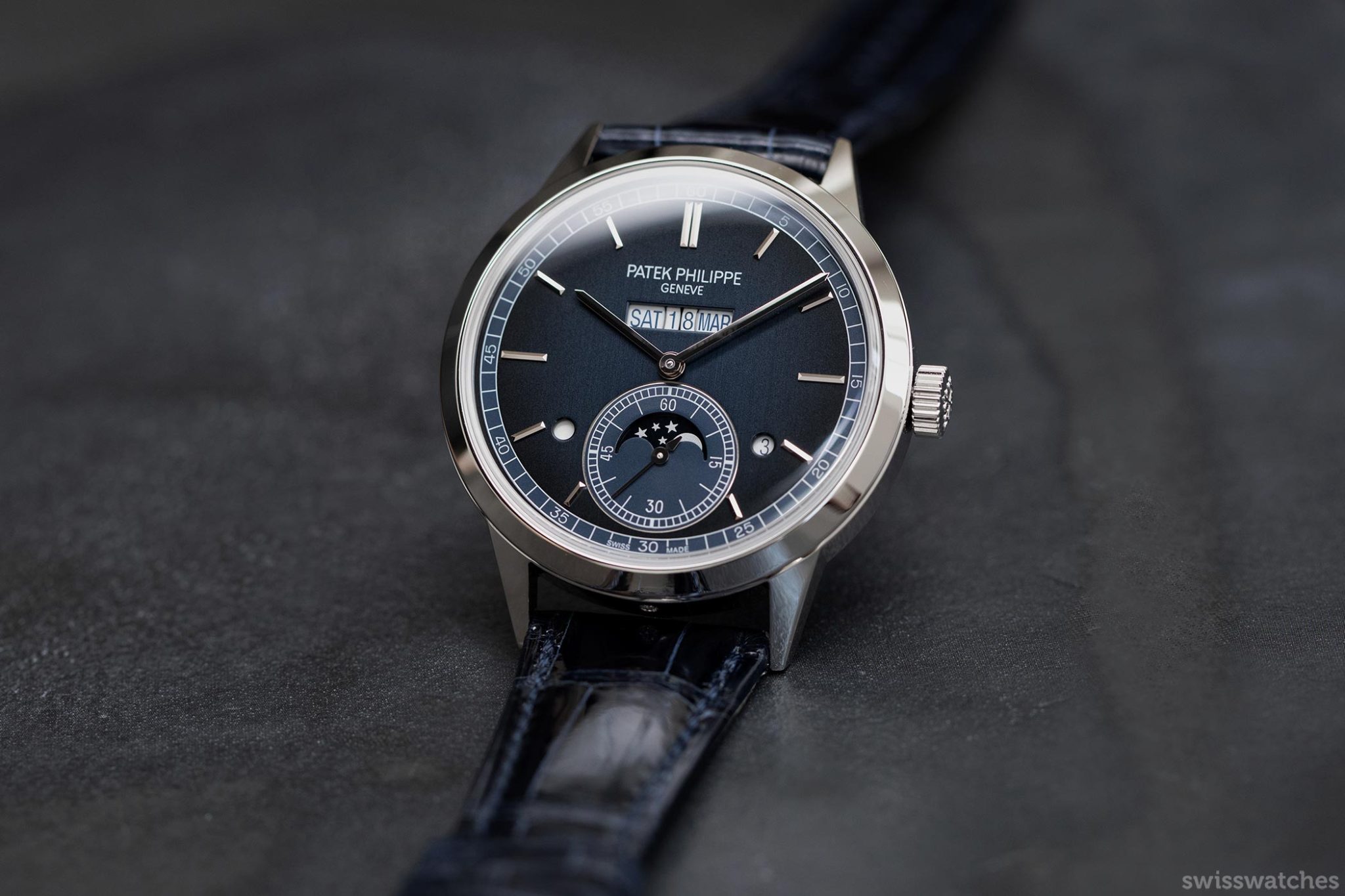
At A. Lange & Söhne, the most similar comparison is the 1815 Annual Calendar, a watch whose complication is considered the ‘little brother’ of the perpetual calendar. The latter is only available from the Glashütte manufacturer in combination with a chronograph function. However, the annual calendar is also less expensive: 52,900 euros.
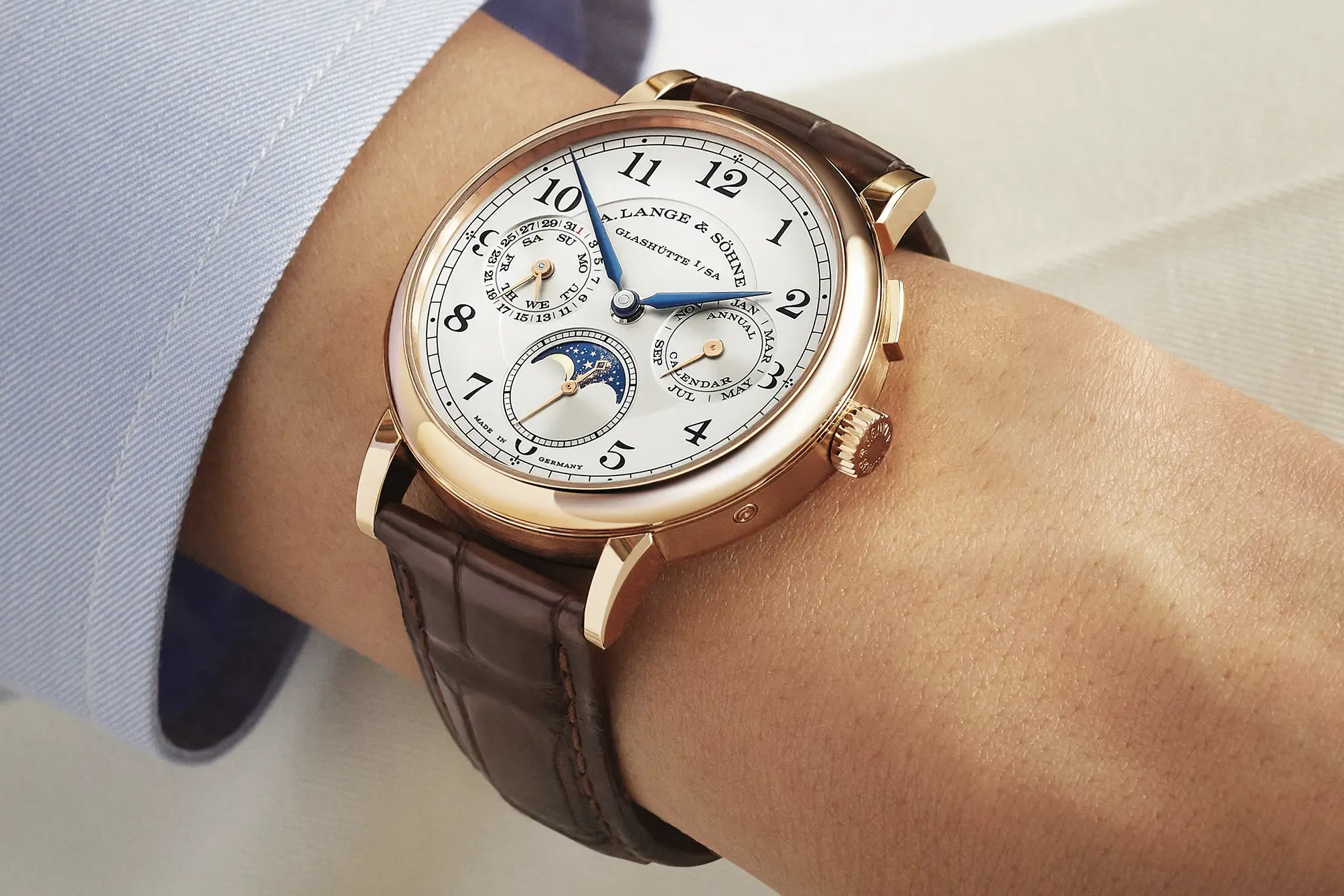
Vacheron Constantin also has alternatives on offer: the Traditional Full Calendar Openface (57,500 euros) is an eye-catcher in purely visual terms, but technically the extra-flat perpetual calendar from the Patrimony collection (101,000 euros) is most comparable to the L.U.C Lunar One. Here too, however, much less space was given to the moonphase theme. Overall, it has a more restrained, even more classic appearance than the competition from Chopard or Patek Philippe.
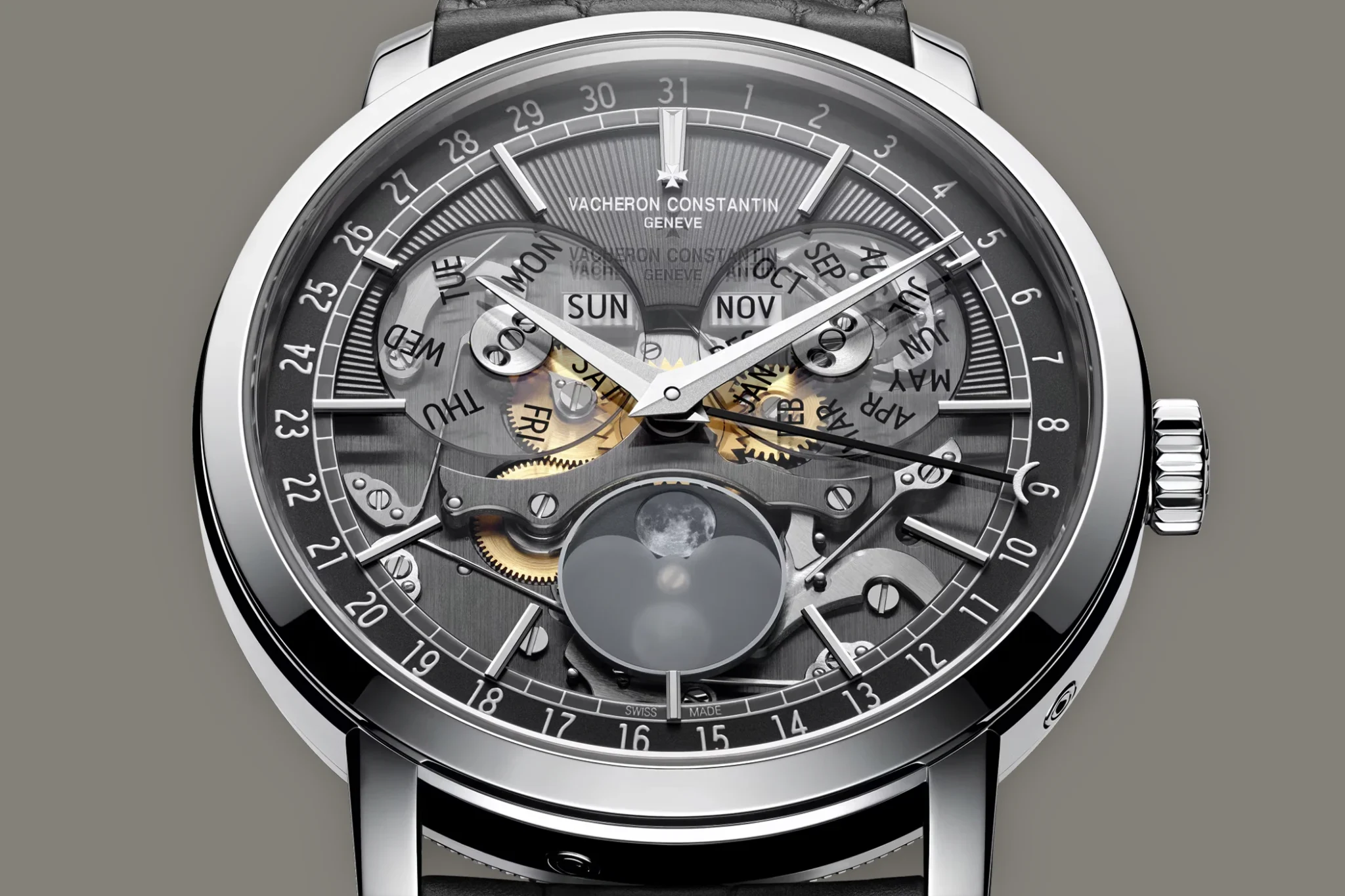
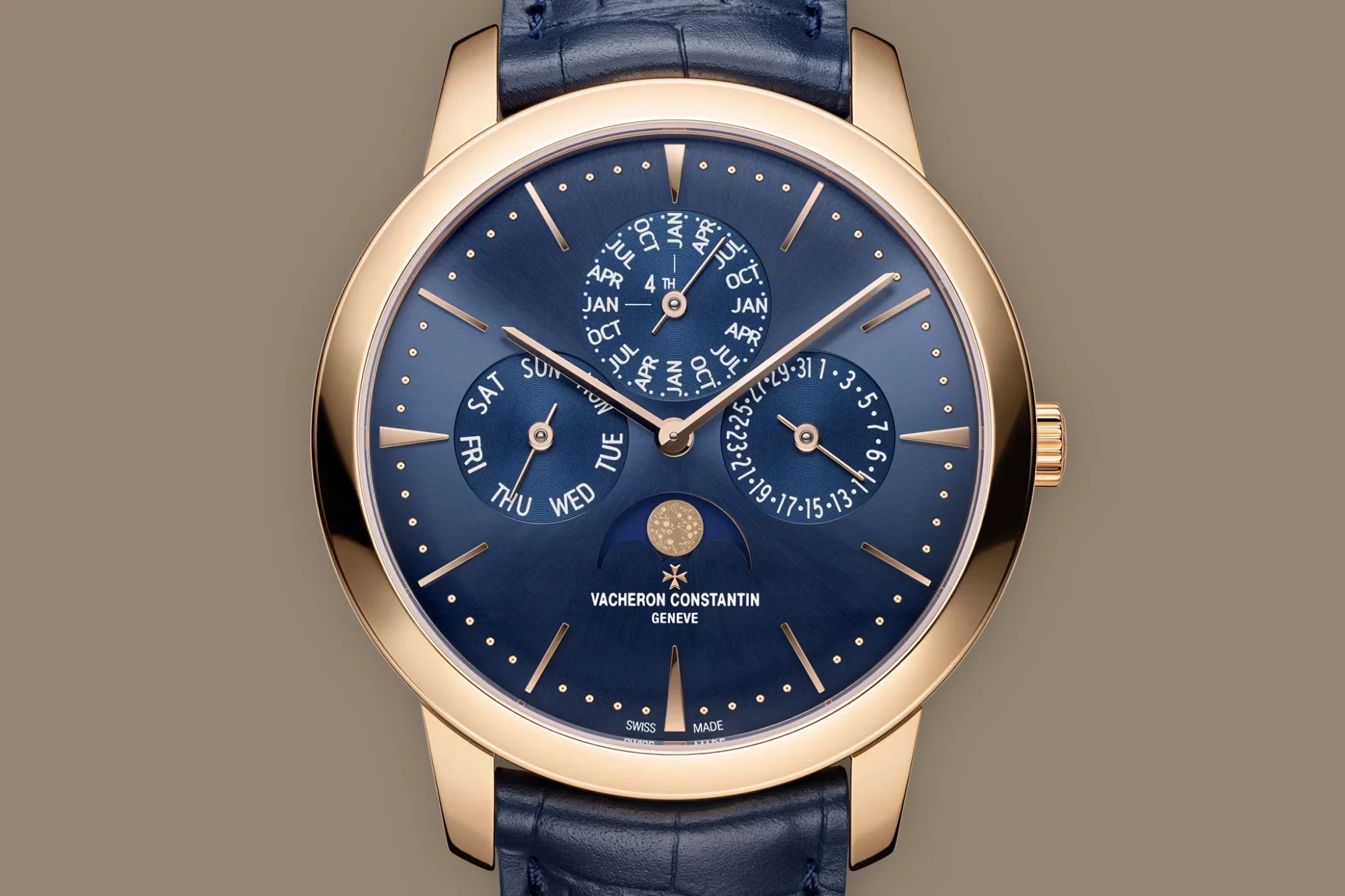
The highlight at the end: the L.U.C Flying T Twin Perpetual
The L.U.C Flying T Twin Perpetual is a novelty that should by no means seem like a footnote to the third generation of the Lunar One. Rather, it can be seen as the result of many years of development and improvement. Visually, the model shares the case design, dimensions and dial DNA with the L.U.C Lunar One. It is also possible to play with the easily interchangeable bracelets. At the same time, the combination of perpetual calendar and flying tourbillon is a world premiere for Chopard, powered by the new L.U.C 96.36-L calibre.
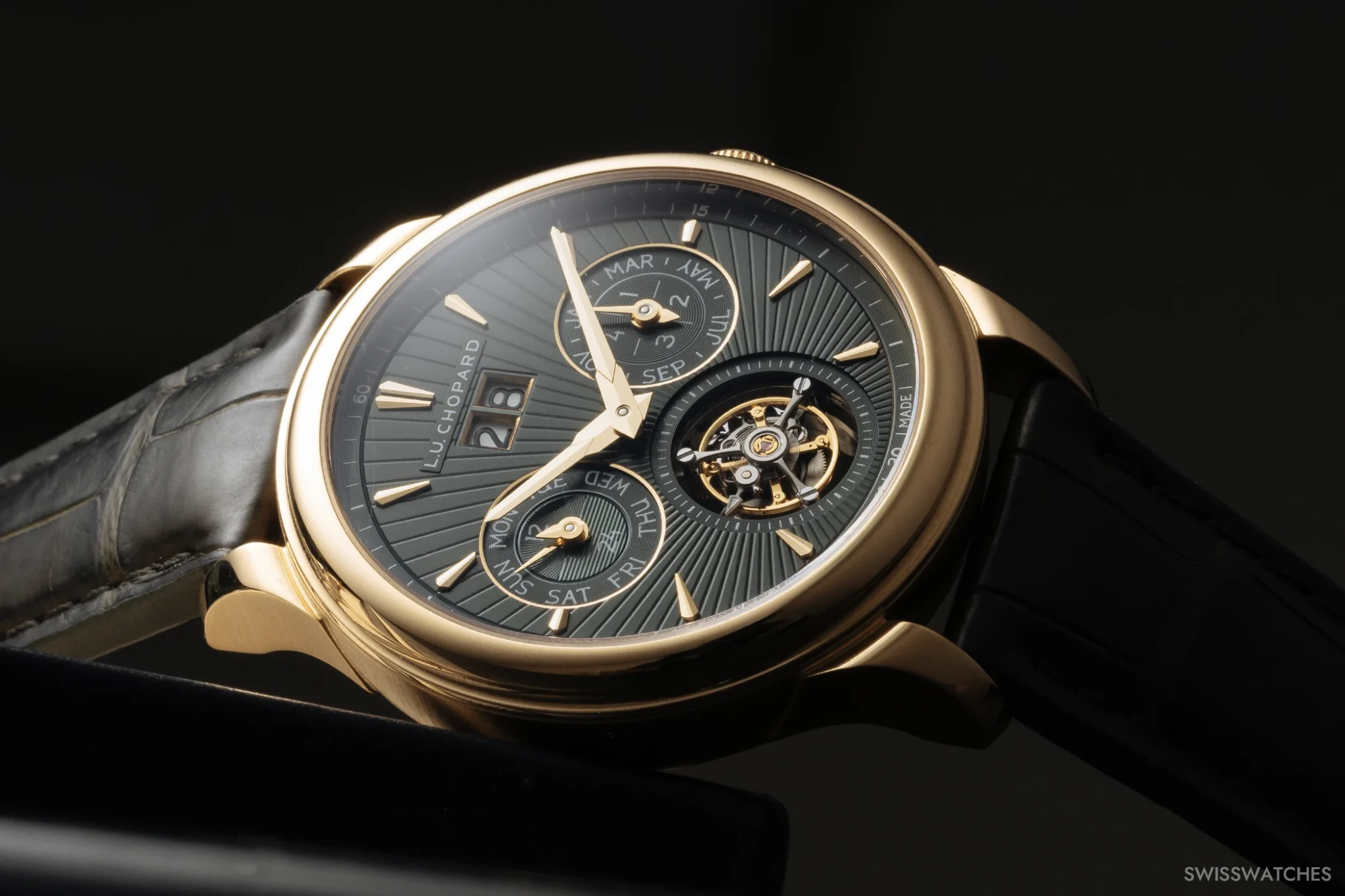
The watch follows in the tradition of the ‘Perpetual T’ from 2013, a hand-wound calibre with a perpetual calendar and a classic tourbillon with a bearing bridge, as well as the ‘Flying T Twin’, the manufacture’s first self-winding flying tourbillon, which follows on from this reference. It combines 319 components, which together represent a horological manufacture milestone.
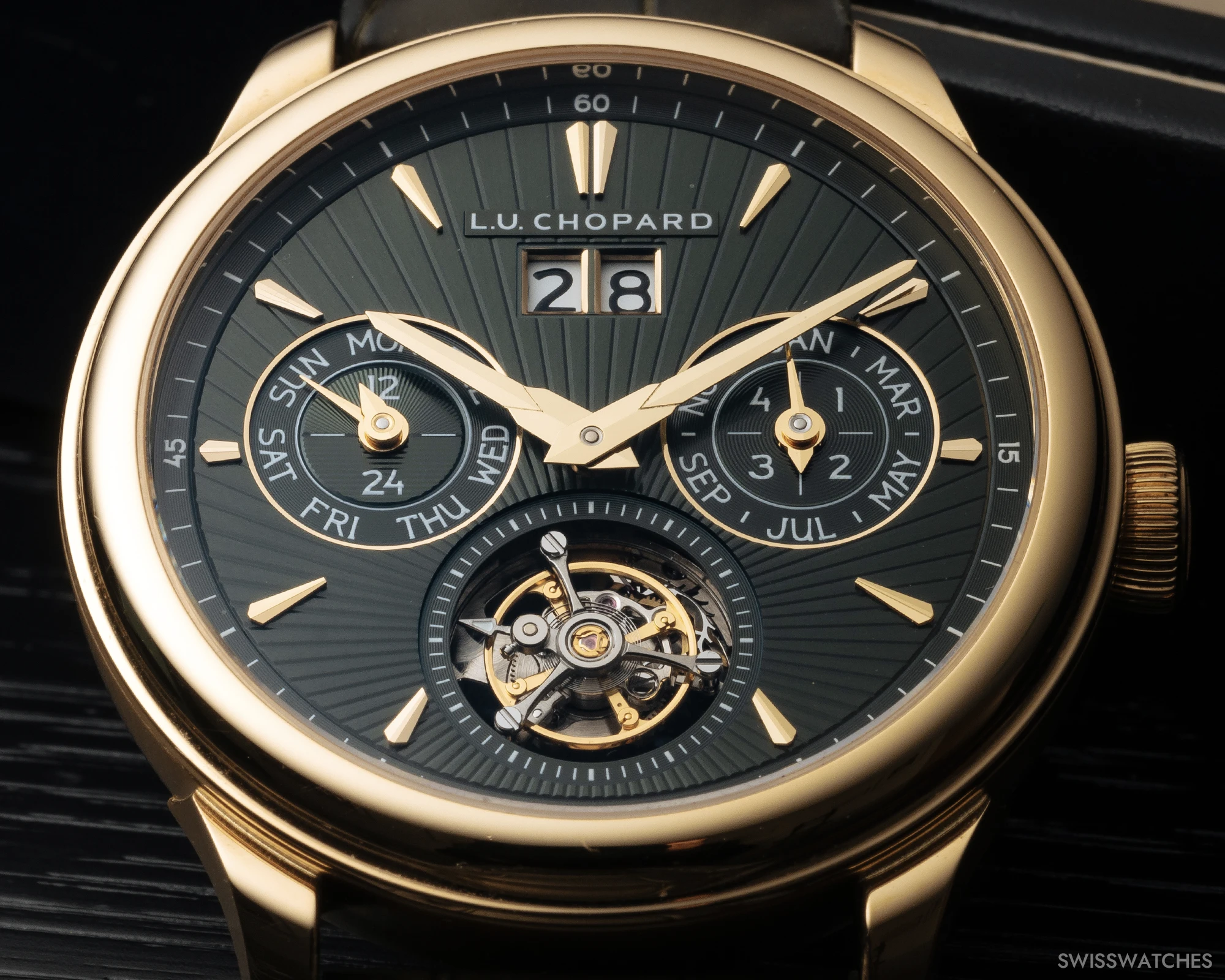
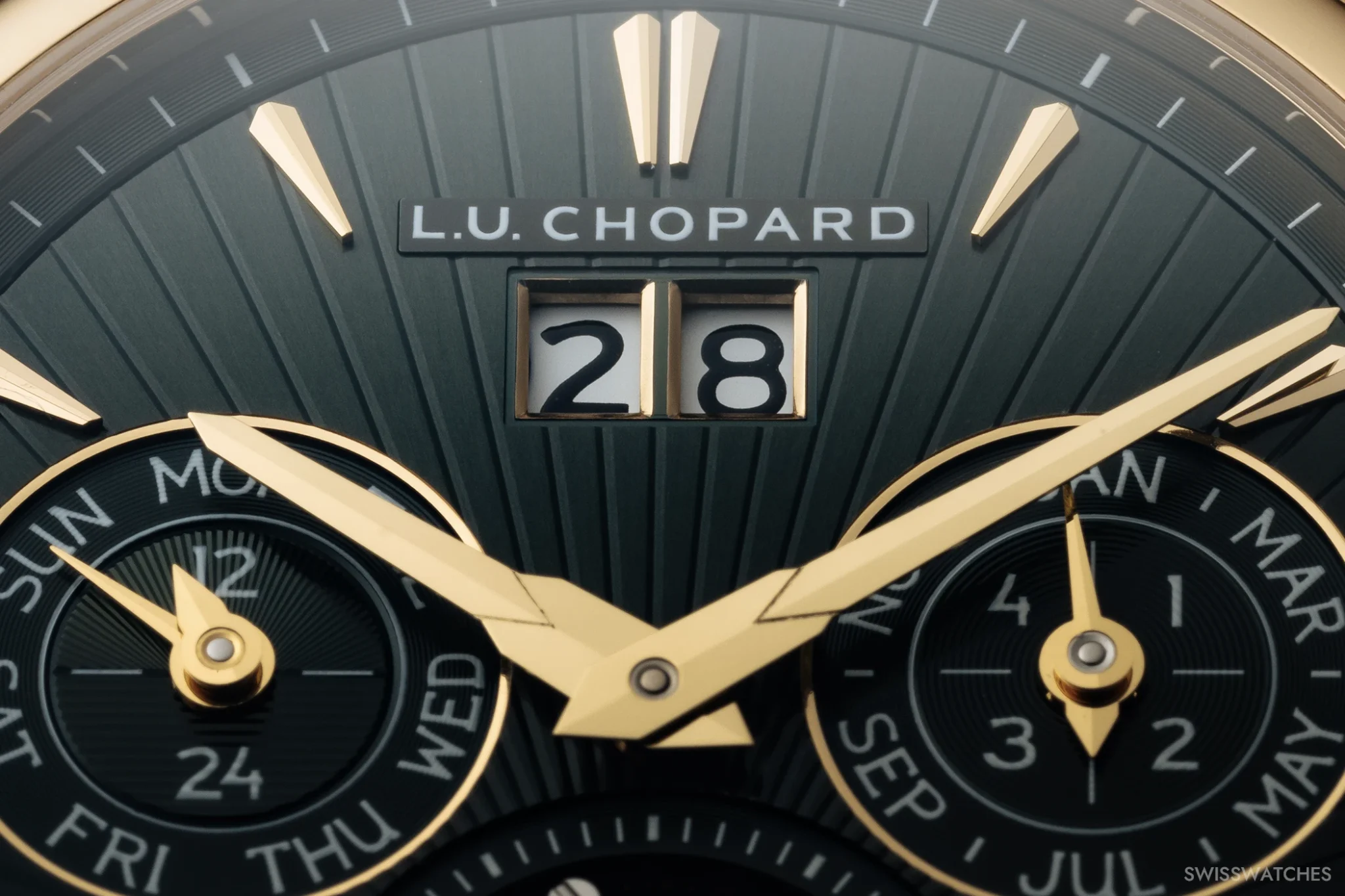
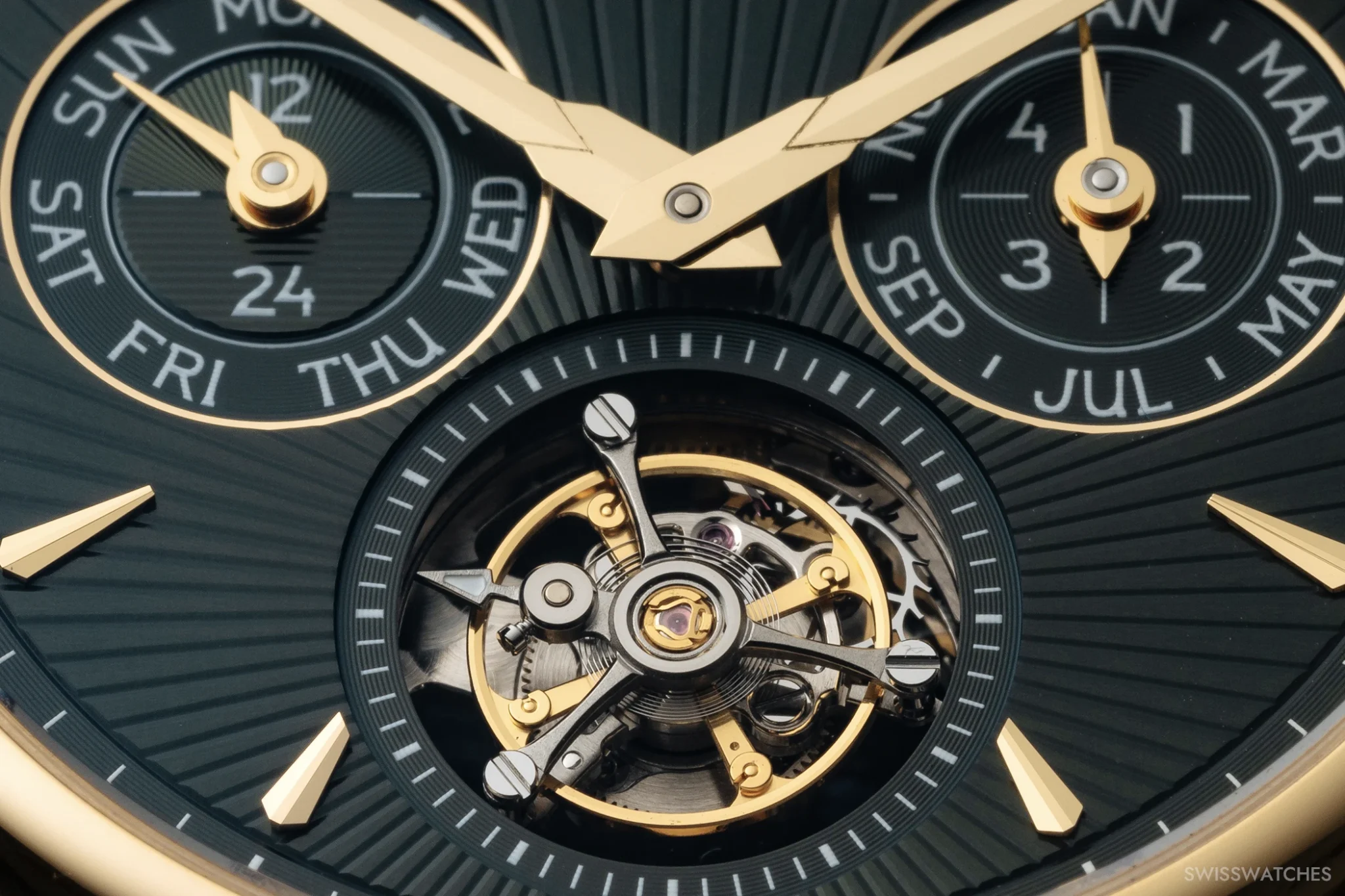
With its forest-green dial and yellow gold case, it brings together what can certainly be described as the pinnacle of Chopard expertise: flying tourbillon, perpetual calendar, COSC-certified automatic movement with micro-rotor. The price: 129,000 euros.
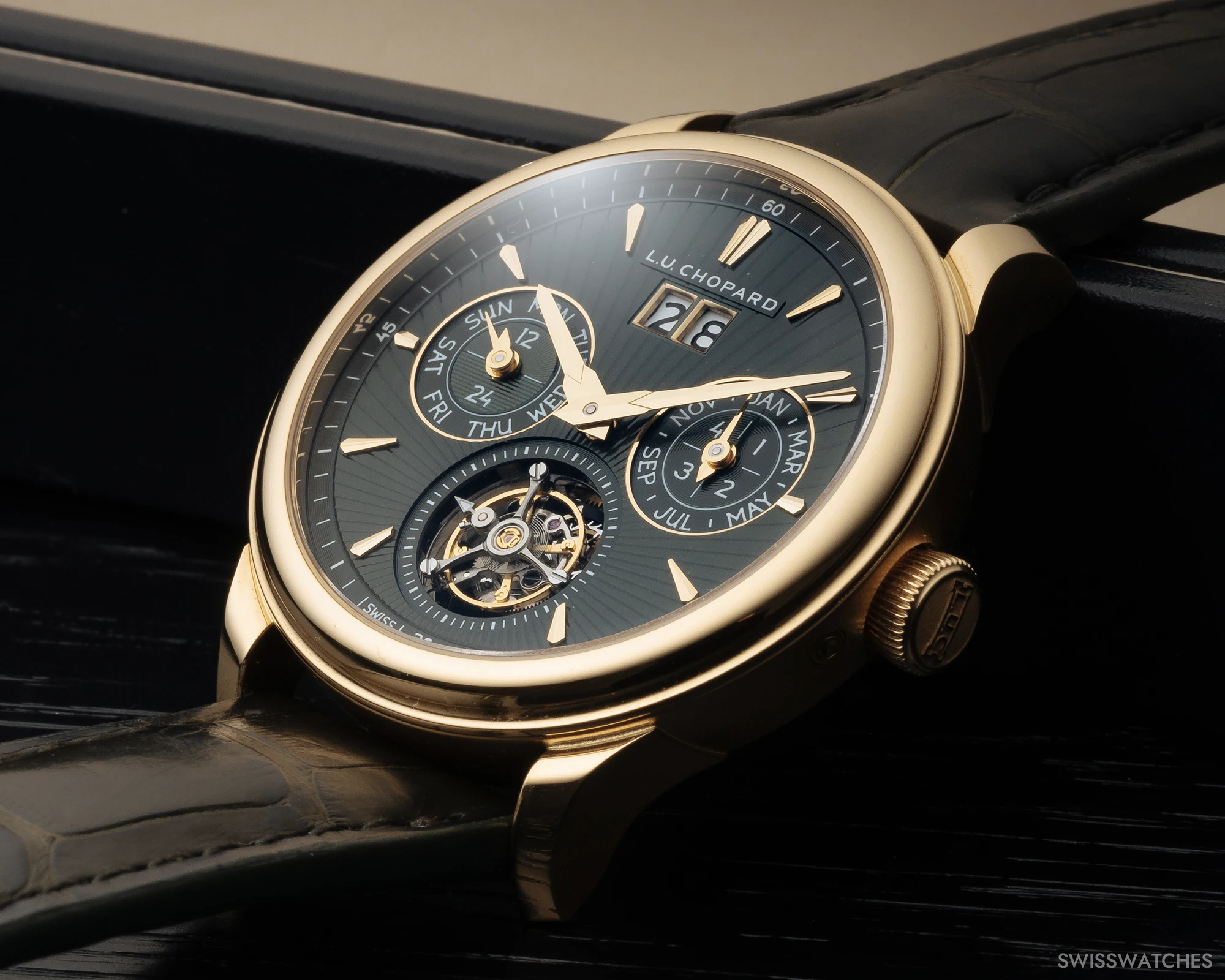
The long journey of the L.U.C collection began in 1997 with the premiere of the L.U.C 1860 and its calibre L.U.C 96.01-L. Since then, every further development has been based on this calibre, and even the L.U.C Flying T Twin Perpetual will only be a further intermediate stage on another horological summit. What will be shown in two years’ time to mark the 30th anniversary of the collection? Karl-Friedrich Scheufele is known to have a lot of staying power. Projects can take years to realise. The latest watches bear witness to this.
At the end of the presentation by the Chopard employees, we are left with the feeling that we have had a glimpse into the future of the Fleurier-based manufacture – and it looks like good one.
